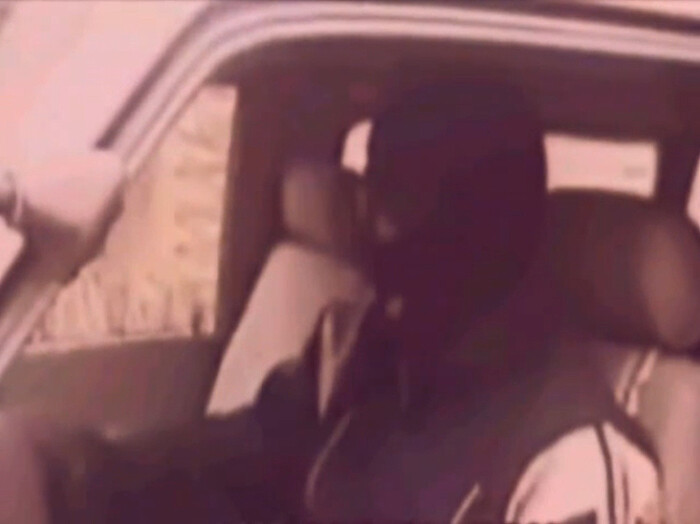Seth Price is an artist with conceptual charm: he transforms even the most unassuming materials and practices into contemplative works of art with a Duchampian flick of the wrist. For his exhibition at Friedrich Petzel, “Non-Speech, Fire and Smoke,” Price continues to re-imagine what is deemed artistic media by presenting eight music videos installed in individual user-activated cubicles. That is, the artist’s music tracks (from two soon to be released records from Dais records and Audio Visual Arts) are complemented by video footage originating from his working archive. Although most of the music videos were assembled in 2010 and uploaded on Price’s YouTube channel last fall, much of the footage consists of runoffs of the artist’s more ambitious projects, such as his video lecture Redistribution (2007-ongoing), or material the artist has yet to incorporate in his oeuvre, such as a military film reel a friend bestowed to him in 2002. The resulting exhibition speaks largely to Price’s ability to create something magical from nothing, but also to the uncharacteristic peripheral, if scattered nature of its encompassing parts.
The music videos included in “Non-Speech, Fire and Smoke” are very much the opposite of the hyperproduced Will Cotton and Katie Perry variety—and while they vary slightly in quality, the videos are generally highly intimate and, at times, even fantastical. The “music” included here in Price’s videos challenges the definition of music as it were, with tracks ranging from flittering electronic pulses to full-on fables written and narrated by the artist. Happy Boots comprises a cheery track from 2002 set against canned CGI effects originally intended for the aforementioned Redistribution video. With its glimpse of the Twin Towers, N.Y. Sorrow pairs footage from a Manhattan helicopter ride shot just before 9/11 with a song recorded just after. Non-Speech mashes up military footage complemented by a bumbling voice-based track (from 2003). In the dark Fire and Smoke, the artist narrates the tale of a girl walking through a forest who is led astray by an evil woman and saved by a man who entrances the evil woman into a fire. The evil woman’s legs burn into charred wooden stumps, and the man and girl escape as the woman is distracted by drawing pictures with her newfound pencil appendages. Other videos include moldy Super 8 footage of an iguana and talking excrement. Such unbridled imagination recalls that of prepubescent children, the kind so rarely seen in artists showing in institutions today.
Within “Non-Speech, Fire and Smoke” something feels slightly off, yet embracing the uncanny is one of Price’s veteran tricks. To dub the exhibition as comprised of “music videos,” rather than simply conventional videos seems like a slight misnomer-or perhaps there’s a leap in logic and faith that a handful of music videos originally intended for YouTube could create a salient exhibition. Given that within music videos the music comes first and the video second, it seems as if the real “art” here would be the music itself, or the two records, while the videos are merely supplementary. This is indeed is the case, and the unsettling factor comes into play when viewing this supplementary material in a gallery setting. Slightly assuaging the awkwardness are Price’s viewing cubicles, which attempt to replicate the one-to-one nature of privately watching a YouTube video. While Price may fall short in convincing the white cube of his videos’ autonomy and prerequisite slickness, his concoction of awkwardness and inventiveness is somewhat attractive, but perhaps better suited for the Internet.






